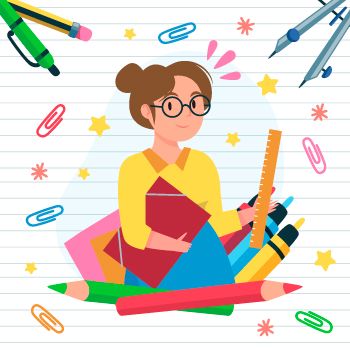
Technologies in the classroom: A teacher's view and the children's view
Author: Alba Cabanillas | Teacher @rincondeunaprofesora
Today, our entire society is surrounded by this phenomenon that is here to stay: new technologies, and we have had to adapt to them quickly in schools, also due to the pandemic. This means that teaching has evolved thanks to these new technologies, and we must teach our students in accordance with the sociological and technological moment we are living in.
It's important to differentiate between the technology that surrounds us in our daily lives and the technology we have or need to bring into the classroom. We must be clear that these new technologies are essential to adapt to the changing needs and lifestyles of younger generation students. However, we must not forget that the technology that must be brought into schools must be technology that provides a learning guide for our students. Therefore, the role of teachers in this new path of learning through technology is fundamental.

However, not all schools and teachers are equally committed to working with new technologies in the classroom. Furthermore, many schools lack resources for ICT. This is because new technologies have rapidly entered school life. Remember that before the pandemic, ICT was only a subject, even optional in some schools, and now we use this tool in our daily lives.
This new approach to classes can help us develop different values and aspects in children, such as autonomy, skills, and relationships. It is believed that thanks to technology, children can become much more independent when completing homework, develop different skills that they might not be able to develop without technology, and, of course, and very importantly, develop much more relationships with their classmates.
As for teachers, at certain ages, it may seem much more complicated to learn about technology, but ultimately, through various training programs, teachers can incorporate it into their daily classroom routines. This new technology brings many benefits to both students and teachers, as assessments, videos, photos, etc., become much faster, simpler, and more effective through new technologies.

It's important to keep in mind that many teachers are new to technology; that is, most of them weren't born in the digital age, but rather acquired their knowledge through their academic and personal training (especially among older teachers). Students were born with these new technologies and, so to speak, have been learning them since birth.
As we have mentioned before, new technologies have some advantages such as:
Today, our entire society is surrounded by this phenomenon that is here to stay: new technologies, and we have had to adapt to them quickly in schools, also due to the pandemic. This means that teaching has evolved thanks to these new technologies, and we must teach our students in accordance with the sociological and technological moment we are living in.
It's important to differentiate between the technology that surrounds us in our daily lives and the technology we have or need to bring into the classroom. We must be clear that these new technologies are essential to adapt to the changing needs and lifestyles of younger generation students. However, we must not forget that the technology that must be brought into schools must be technology that provides a learning guide for our students. Therefore, the role of teachers in this new path of learning through technology is fundamental.

However, not all schools and teachers are equally committed to working with new technologies in the classroom. Furthermore, many schools lack resources for ICT. This is because new technologies have rapidly entered school life. Remember that before the pandemic, ICT was only a subject, even optional in some schools, and now we use this tool in our daily lives.
This new approach to classes can help us develop different values and aspects in children, such as autonomy, skills, and relationships. It is believed that thanks to technology, children can become much more independent when completing homework, develop different skills that they might not be able to develop without technology, and, of course, and very importantly, develop much more relationships with their classmates.
As for teachers, at certain ages, it may seem much more complicated to learn about technology, but ultimately, through various training programs, teachers can incorporate it into their daily classroom routines. This new technology brings many benefits to both students and teachers, as assessments, videos, photos, etc., become much faster, simpler, and more effective through new technologies.

It's important to keep in mind that many teachers are new to technology; that is, most of them weren't born in the digital age, but rather acquired their knowledge through their academic and personal training (especially among older teachers). Students were born with these new technologies and, so to speak, have been learning them since birth.
As we have mentioned before, new technologies have some advantages such as:
- They facilitate understanding . ICTs motivate students and make them pay greater attention.
- They increase student autonomy . Students become more self-sufficient and resourceful.
- They teach teamwork .
- They make teaching flexible . Each student can work at a different pace.
- They facilitate and speed up communication between the entire educational community .
- They create addiction . Controlling the amount of time students spend in front of the computer.
- Visual fatigue . The use of these new technologies could cause problems such as eye strain, dry eyes, etc.
- Socialize less . We've mentioned that one of the advantages could be teamwork, but one of the disadvantages could also be that the student becomes so obsessed with being in front of new technologies that they forget everything else around them.